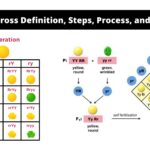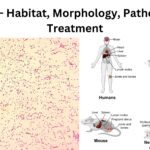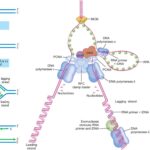IB Biology 10 Views 1 Answers
Sourav PanLv 9November 9, 2024
What role do excited electrons from Photosystem I play in reducing NADP?
What role do excited electrons from Photosystem I play in reducing NADP?
Please login to save the post
Please login to submit an answer.
Sourav PanLv 9May 15, 2025
Excited electrons from Photosystem I (PSI) play a crucial role in the reduction of NADP++ to NADPH during the light-dependent reactions of photosynthesis. Here’s how this process unfolds:
Mechanism of Electron Transfer and NADP++ Reduction
- Excitation of Electrons in PSI:
- When light is absorbed by PSI, specifically by the chlorophyll molecule known as P700, it excites an electron to a higher energy state. This process occurs after electrons have traveled through the electron transport chain from Photosystem II (PSII) and have lost some energy along the way.
- Electron Transfer to Ferredoxin:
- The high-energy electron from the excited P700 is transferred to a primary electron acceptor and then passed to ferredoxin (Fd), a small soluble protein that acts as an electron carrier. This transfer is facilitated by a series of proteins within the thylakoid membrane.
- Reduction of NADP++:
- The electrons carried by ferredoxin are then transferred to an enzyme called NADP++ reductase. This enzyme catalyzes the reduction of NADP++ by adding two electrons and one proton (H++) from the stroma, resulting in the formation of NADPH . The overall reaction can be summarized as:
NADP++2e−+2H+→NADPH+H+ - Importance of NADPH:
- NADPH serves as a crucial reducing agent in the Calvin cycle, where it provides the necessary electrons for converting carbon dioxide into glucose and other carbohydrates. Thus, the reduction of NADP++ to NADPH is essential for storing energy derived from sunlight in a form that can be used for biosynthetic processes .
- Integration with ATP Production:
- The processes occurring in PSI and PSII are interconnected. While PSI is responsible for generating NADPH, PSII generates ATP through chemiosmosis, creating a balance between these two energy carriers that are vital for the subsequent light-independent reactions (Calvin cycle)
0
0 likes
- Share on Facebook
- Share on Twitter
- Share on LinkedIn
0 found this helpful out of 0 votes
Helpful: 0%
Helpful: 0%
Was this page helpful?




